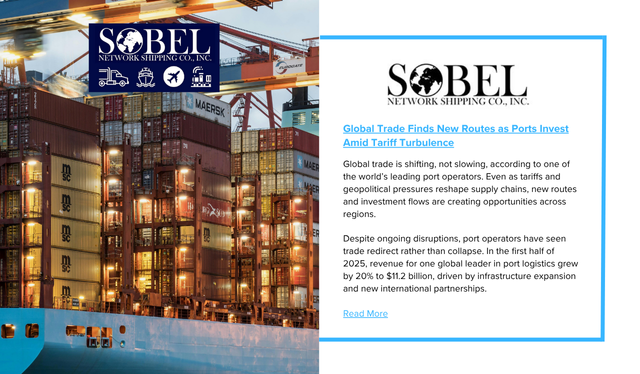Global trade is shifting, not slowing, according to one of the world’s leading port operators. Even as tariffs and geopolitical pressures reshape supply chains, new routes and investment flows are creating opportunities across regions.
Despite ongoing disruptions, port operators have seen trade redirect rather than collapse. In the first half of 2025, revenue for one global leader in port logistics grew by 20% to $11.2 billion, driven by infrastructure expansion and new international partnerships. This year, the company announced $2.5 billion in port investments spanning the Middle East, Africa, South Asia, Europe, and the Americas, with new agreements to modernize facilities in Syria, the Dominican Republic, and Canada.
Executives say cargo previously bound for the U.S. is increasingly finding markets in Africa, the Middle East, and Central Asia. Trade opportunities in landlocked nations such as Uzbekistan and Kazakhstan are expanding rapidly, with new facilities and corridors supporting a “Middle Corridor” route that links Asia to Europe via Central Asia and Turkey.
Emerging logistics corridors are also in focus. Rail and sea initiatives designed to connect India with Europe and the U.S. via the Middle East are still years away, but alternative routes through Iraq, Turkey, and Syria are already supporting trade flows. A recently signed $800 million deal to upgrade a Syrian port underscores how infrastructure expansion is being deployed to diversify pathways and strengthen regional access.
India remains a particular bright spot despite the drag from new U.S. tariffs. With growing links to African markets and major domestic projects such as the Tuna-Tekra port and industrial complex, the country is seen as strategically positioned to benefit from its proximity to high-growth regions.
The message from global port leaders is clear: while tariffs and politics may disrupt established trade lanes, investment in ports, rail, and industrial zones is building resilience. Supply chains are not standing still—they are shifting to wherever opportunity, infrastructure, and market demand align.


